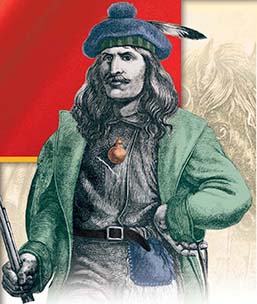SECTION 2: The French Empire

▲ French fur trader

A beaver ►
WITNESS HISTORY  AUDIO
AUDIO
A Profitable Fur Trade
While the Spanish grew rich mining silver and gold in South America, the French profited from the fur trade in Canada. But the trade relied on good relations with the Indians, who hunted and traded valuable beaver pelts with the French. At times, conflicts with the Iroquois halted the trade. As one missionary reported, New France faced ruin:
“At no time in the past were the beavers more plentiful in our lakes and rivers and more scarce in the country’s stores…. The war against the Iroquois has exhausted all the sources…. The Montréal store has not purchased a single beaver from the Natives in the past year. At Trois-Rivières, the few Natives that came were employed to defend the place where the enemy is expected. The store in Québec is the image of poverty.”
—François Joseph Le Mercier, Relations des Jésuites, 1653
Objectives
- Explain how the fur trade affected the French and the Indians in North America.
- Explain how and why Quebec was founded.
- Describe the French expansion into Louisiana.
Terms and People
- Northwest Passage
- Quebec
- Samuel de Champlain
- coureurs de bois
- metis
NoteTaking
Reading Skill: Compare and Contrast Fill in a Venn diagram like the one below comparing Spanish America and French America.

Why It Matters Spain’s success with its American colonies encouraged other European nations to establish colonies. French explorers led expeditions along the North American Atlantic seaboard during the 1500s. These explorers established a number of French settlements along the St. Lawrence River and began trading fish and animal furs with Native Americans in the region. In time, these small settlements grew and became the nucleus of present-day Canada. Section Focus Question: How did France’s American colonies differ from Spain’s American colonies?
The French Establish a Fur Trade
During the early 1500s, explorers who sailed for France, including Giovanni da Verrazano and Jacques Cartier, were less interested in establishing colonies and more interested in finding a Northwest Passage—a water route to Asia through the cold waters of present-day Canada. They probed the eastern coastline of North America, from present-day North Carolina to Newfoundland. During the 1530s and 1540s, Cartier investigated the St. Lawrence River.
France Establishes New France
The French king claimed the region that Cartier explored as New France. At the mouth of the St. Lawrence River, French mariners fished for cod and hunted for




